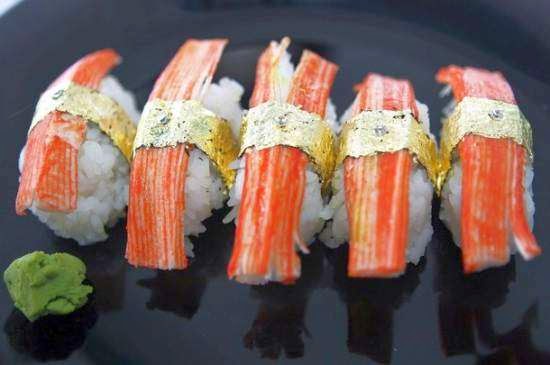 I mean, should it always be a roll, does it need to be rolled with seaweed or is a mandatory ingredient 'seafood'. In Suriname, it is not until recently that we have sushi restaurants. And it appears that more and more locals are liking the sushi option, which is a very good improvement compared to ten years ago, when most people are reluctant to try new culinary things.
I mean, should it always be a roll, does it need to be rolled with seaweed or is a mandatory ingredient 'seafood'. In Suriname, it is not until recently that we have sushi restaurants. And it appears that more and more locals are liking the sushi option, which is a very good improvement compared to ten years ago, when most people are reluctant to try new culinary things. I did some research and nowhere on the web could I actually find the requirements/qualifications for sushi. The only thing that is written in most of them is that the base is specially prepared rice.
I did some research and nowhere on the web could I actually find the requirements/qualifications for sushi. The only thing that is written in most of them is that the base is specially prepared rice.However both white and brown rice can be used, we mostly see the white version. And it is also mostly prepared with rice vinegar to give it a sticky texture.
I know many newbies will immediately think of raw fish when they hear about sushi. That is of course an option, but nowadays there are so many with cooked ingredients, so don't worry about that.
Here's a little something about sushi:
- However it is known as a Japanese dish, its origin can be found in Southeast Asia.
- Sushi ( the ones with raw fish) minus rice = sashimi
- Sushi mostly come with 3 items: ginger, wasabi and soy sauce.
The ginger is to clean the palate between rolls/ meals and the wasabi can be added to the soy sauce,
in which sushi can be dipped.
- however it's common to use rice vinegar, it's not a mandatory thing. Some people use orange or
 lemon juice. I suppose it should be a bit acidic for it to work.
lemon juice. I suppose it should be a bit acidic for it to work.- sushi is not always rolled, so seaweed is not a mandatory ingredient. For example, the Nigiri is just
molded rice with a piece of meat/fish on it. But there are also other kinds like sushi cupcake- the ingredients are put in a cupcake-like bowl
- the most expensive sushi costs 91,800 Phillipino Pesos (£1,313.88, $1,978.15) for five pieces of
Nigiri garnished with diamonds and wrapped in 24-karat gold leaf produced by chef Angelito
Araneta Jr. -> information taken form Guinness book of World Records. If you want to try this expensive masterpiece, you'll have to be in Manila.
- sushi is not always hearty. There are lots of sushi desserts in the world. It kind of give me a feeling that they misnamed the Swiss Roll. That will be a battle between the Japanese and the Swiss I quess.
 |
| http://thoughtcatalog.com/melanie-berliet/2013/08/confessions-of-a-naked-sushi-model/ |
- and if you want more information on sushi, the latest edition of Victuals has an article about it. Make sure not to miss out.
You know,... every where I go they have their own sushi. Like Aruba has their Aruba-sushi, California has the California-roll, why hasn't Suriname has their own sushi yet?
I'm thinking, a Masoes Moksi Alesie -yellow mixed rice- rolled in a deep-fried bokchoy or water spinach or any other Surinamese veggie leaf, filled with baked banana or so.
And last but not least, 27 April 2014 is the National Culinary Competition. And quess what?? I got invited to be a judge. Who knows? Maybe I do get served a Surinamese sushi?
The location is: SUIT NV and it's free entrance!! See you there!!


No comments:
Post a Comment